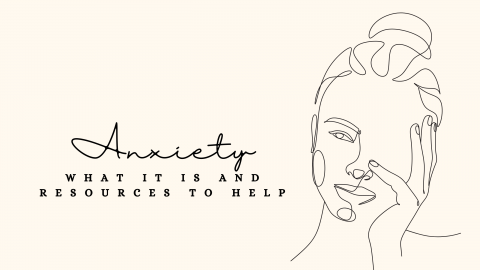
What is Generalized Anxiety Disorder (GAD)?
Generalized Anxiety Disorder is one of the most common anxiety disorders in Canada.1 One in 12 Canadians will suffer from anxiety at some point in their life2. If you are one of these people, know that you are not alone and that there are many accessible resources to help you cope. Anxiety comes in all shapes and sizes and looks different in everyone who may be struggling. Some of the symptoms commonly occurred with anxiety includes persistent worrying or anxious feelings3. Sometimes your body may sweat, tremble, or shake; and your mind may grow irritable, restless, or on edge.
Adaptive Coping4
Dealing with anxiety can be a tricky process, especially if you have not been exposed to healthy coping mechanisms. The term adaptive coping commonly goes hand in hand with unmanaged anxiety. Adaptive coping is essentially a defense mechanism to adverse life stressors as a way to prevent it from happening again such as adverse childhood experiences (e.g., neglect, un-managed mental health, or household instability). Often times this may present as avoidance tendencies, addictive traits, or lack of care for yourself and others. Un-managed anxiety paired with adaptive coping ultimately creates what is called a viscous cycle. This may present as thinking about your child having their first playdate, feeling extremely anxious about how that could look, and coping by isolating yourself and child from the playdate to remove that feeling; in turn creating stress for the child not understanding why. Although in the present moment the act of isolation seems beneficial because stress was alleviated, the child may start to pick up on the anxieties, and mechanisms themselves. This means the possibility of inadvertently passing anxiety down the family system. In total, the factors that co-occur with anxiety may lead to future unhelpful coping mechanisms and tough living environments within the family.
Mea Centre wanted to provide a resource to help better support you and your family. Through research, a guide was developed named, Cognitive Behavioural Techniques for The Anxious Family: Learning, Management, Strategies, and Resources. This blog will provide one of the techniques to better support you. For further content, the guide will be available upon request.
Anxiety goes hand in hand with a term called cognitive distortions. Cognitive distortions often involve a pattern of negative thinking that you cannot really back up with facts or reality. Cognitive distortions often develop as a result of prolonged stress, or trauma. In a nutshell, your brain is working overtime to protect you from having those feelings again. The first step in managing cognitive distortions is to first, identify what type you may be experiencing.
Examples of Cognitive Distortions5
Black or White Thinking: Thinking in extremes without considering any possible facts about the situation (ex., you are convinced your life is doomed to failure).
Overgeneralization: Assuming that one negative situation means that every similar situation after will be negative as well (ex., you think all your relationships will end badly because you are just not good at relationship after your first relationship ended badly).
Catastrophizing: Despite not having any evidence, you think the worst about something unknown (ex., You receive your online pay late and start to think it will never come. You then begin thinking you won’t be able to pay rent, and that your whole family will go homeless).
Personalization: Taking a situation or event personally even though it may not be connected to you at all, or did you cause it. Often this goes hand in hand with blaming yourself for circumstances that are not your fault or out of your control (ex., Your Mother took your sister’s kids to the movies and not yours, and you incorrectly assume yours were intentionally left out).
Mind Reading: Assuming you know what others are thinking, or that others are thinking badly about you.
So how do we deal with our cognitive distortions now that we know a little bit more about them? Well, it takes a bit of practice. But one way we can start to be more aware of when anxiety may be taking over is to complete a thought record. A thought record helps to record and identify your thoughts, feelings, and behaviours according to a situation causing you unwanted emotions. Over time if this is practiced, you may be able to immediately challenge your cognitive distortions which could lead to decreasing anxious thoughts and managing your anxiety.
Thought Record Link: https://acrobat.adobe.com/id/urn:aaid:sc:US:fab1ebe1-e229-4436-a218-0485b9f26860
If you are needing extra help with anxiety, here are a list of community resources.
-
KFL&A Addiction and Mental Heal Services (24-hour crisis line)
- Napanee 613-354-7388 or 1-800-267-7877
- Kingston 613-544-4229 or 1-866-616-6005
-
Connex (mental health services that can be accessed online or by phone/text)
- 1-866-531-2600 or ConnexOntario.ca
-
Telephone Aid Line Kingston TALK (TALK is a confidential support service run by trained volunteers)
- 613-544-1771
- Resolve Counselling Services Canada 613-549-7850 or resolvecounseling.org
- The Psychology Clinic at Queen’s 613-544-1771 or Quennsu.ca/psychology/psychology-clinic
By: Guest Blogger ~ Megan ~ 3rd Year Behavioural Psychology Student
